How Were Families Affected by World War 2 Draft
≫
Sending Them Off to State of war: Pre-Induction Data Programs
Page Content
Answers For Nervous Inductees and Their Families
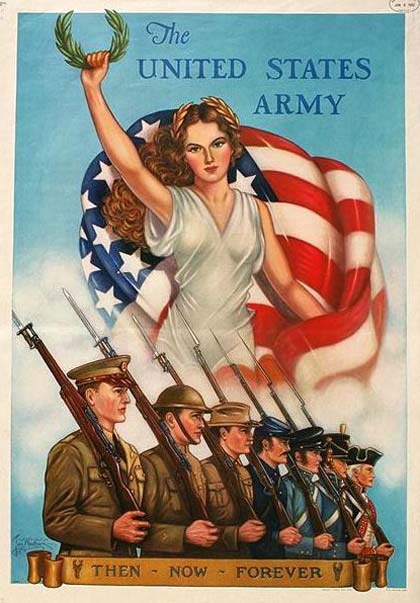
Overview of the Draft
The implementation of America's showtime peacetime typhoon went relatively smoothly. In Congress, the argument for conscription after the plummet of western Europe and the fall of France earlier in the 1940 overcame the bitter opposition of the anti-interventionists. On October. 16, 1940 over 16 meg men registered for the draft at i of near half dozen,500 selective service boards across the country. Each registrant received a typhoon number from one to 9,000. A national lottery later determined the society in which each of the numbers was called and, past extension, who would be drafted showtime.Footnote 1
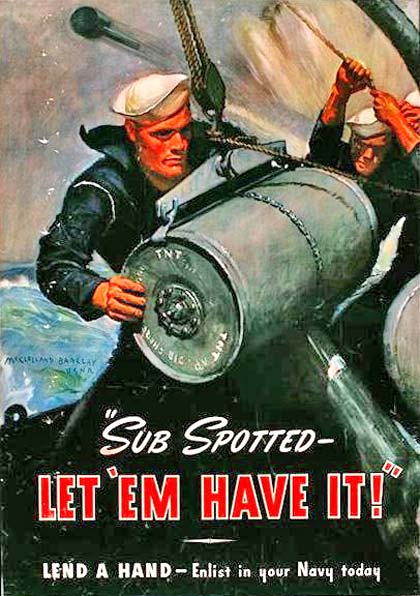
The boards could classify a potential draftee into one of a number of classifications ranging from i-A, meaning "available for armed services service," to iv-F, meaning "physically, mentally or morally unfit for service." Anyone classified other than i was considered deferred but an individual's classification could modify depending on the situation. Deferments were bachelor based on medical, psychological, educational, family unit, or occupational status. In all, nearly 10 million men received exemptions or deferments, with nearly four.5 million of them highly-seasoned their classification. At outset the system did non draft married men, which led to a "marriage boom." Fathers were not drafted until late 1943 and and then simply over the opposition of one U.S. Senator who insisted that "slackers in the regime bureaus" should be inducted "before American homes are cleaved up." Others favored first conscripting "those unmarried men who shun piece of work and are establish in puddle rooms, barrel houses, and on the highways and byways." Eventually about four 1000000 men received deferments based on a growing list of "essential" occupations, mostly in agronomics and industry.Footnote 2
More 5 million potential draftees were rejected for medical, educational, or mental reasons. This was despite relatively low standards for acceptance. For example, the Army would accept draftees who were at least 5 anxiety tall and 105 pounds, provided they had correctable vision, half of their natural teeth, no hernias, flat feet, or venereal disease. As evidence of the crippling upshot of the Depression on public education, hundreds of thousands of men signed their typhoon registration forms with a mark because they could not sign their own names. Before the cease of the war the Army was so drastic for men that it set up special schools to bring illiterate draftees up to a 4th-grade reading level. Meanwhile, most three one thousand thousand men were rejected because of "emotional instability." Some experts blamed this on "Momism" and a State of war Department consultant commented that many women "had failed in the elementary female parent function of weaning offspring emotionally likewise equally physically."Footnote 3
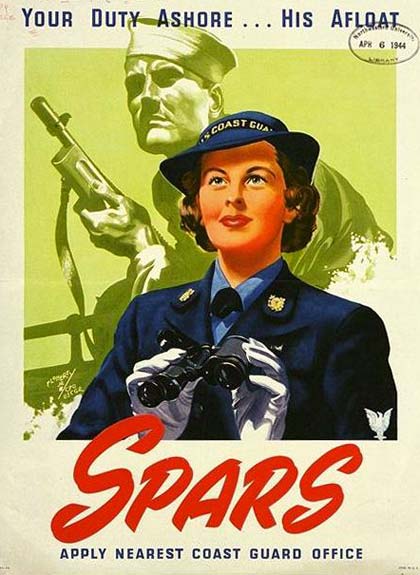
Organizing Pre-Induction Data Programs
By 1943 federal officials had seen plenty anticipation and fielded plenty complaints almost spotty information for inductees and their families. The U.S. Office of Civilian Defense and other federal agencies developed a program that offered answers to common questions brought by inductees. In turn, the federal government sought to enlist the assistance of state defense councils to implement the plan around the land. Government officials reasoned that "if a prospective inductee knows what the Army expects of him, what tests and training he may await to get through, what kind of life he will alive, and what kind of war nosotros are fighting, he will enter the service with greater confidence and assurance. He will adjust more readily to the new situation and probably develop more than quickly into a skilful soldier."Footnote 5

 Oregon Pre-induction program )Footnote half-dozen Federal regime recommended that meetings outset with ring music or group singing to set up the correct tone. Their sternest communication concerned long-winded presenters: "The nearly common criticism of the meetings is directed at the number and length of the speeches. If the films are used, and if the leaflets are distributed during or at the close of the meeting, very little speech-making should be necessary."Footnote 7
Oregon Pre-induction program )Footnote half-dozen Federal regime recommended that meetings outset with ring music or group singing to set up the correct tone. Their sternest communication concerned long-winded presenters: "The nearly common criticism of the meetings is directed at the number and length of the speeches. If the films are used, and if the leaflets are distributed during or at the close of the meeting, very little speech-making should be necessary."Footnote 7
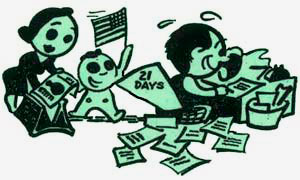
The pre-consecration information program in Oregon moved forward quickly during the jump of 1944. Multnomah County was drawing in an average of 300 inductees and family members to weekly meetings. Marion Canton typically saw a crowd of from thirty to 50 people at its meetings, which were held twice a month. Most participating counties held monthly meetings or "on draft calls." These meetings normally brought from 15 to 75 people depending on the size of the county and the typhoon telephone call. Even though some counties were even so in the process of organizing meetings, by July 1944 one State Defense Council official was confident of full statewide coverage either in open forum meetings or by radio broadcasts, proverb that "as recently as last week, ...on a trip through the land, [a State Defense Council employee] lined up three counties hitherto only lukewarm on the idea."Footnote 9
Draftees Get Their Affairs in Order
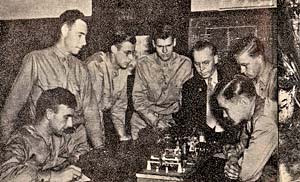
On to the Army Reception Center
After getting affairs in society and maxim goodbyes, draftees were sent for iii-five days at a reception eye. Men were cautioned not to "gloat on the night before you have to go out for the Reception Heart" since they would be given a battery of tests and "you'll desire to be on your toes." They were likewise told to travel calorie-free: "Don't pack a trunk. Take along a small overnight bag with razor, toothbrush, modify of underwear, extra handkerchiefs." After swearing in, the new soldiers (in the instance of the Army, although Navy training centers were similar) would become a stark reminder that they were no longer in the civilian earth for as officials noted: "There'due south no privacy for the individual." In the company barracks, the soldiers would "eat and sleep, work and play, toilet and clothes correct along with a whole bunch of other fellows who are doing the aforementioned matter." The Regular army supplied wearable and shoes that were "carefully fitted past tailors and shoe experts" along with toiletries. New soldiers were warned to go along track of their article of clothing since "you volition have to pay for whatsoever articles you lot may lose." Aptitude and nomenclature tests were followed by interviews in which Army staff weighed diverse skills and other criteria along with military machine needs to arrive at an assignment for the new soldier.Footnote 12 Personal preferences for job assignments were office of the decision process but no promises were made:
Basic Training
Soldiers next landed for 17 weeks of basic training where, according to pre-induction educational activity literature, they gave upwardly their minds and bodies to a ritual of calisthenics, close-order drills, armed services indoctrination, and Army subject field. Soldiers learned methods of self-protection, camouflage, care and use of weapons, and how to be part of a combat team. Sailors learned a variation on the Army theme with training in elements of seamanship, gunnery, signals and Navy linguistic communication. For those in the Marine Corps, "'Boot Camp' will probably exist an ordeal for you lot. It is non easy. The day begins at 4:45 and when it ends at 8 P.M. y'all volition greet sleep with pleasure." Officials noted that 90% of marines on duty were gainsay troops who would likely come across battle and while they were "taught to consider your rifle the all-time friend you always had," it was fighting battles together that would build lifelong comrades in the Marine Corps. Later on bones training, many soldiers, sailors and marines were sent to their assigned duty. Others, depending on their specialty, required further training that could last up to a twelvemonth. Most served for the duration of the war plus 6 months, unless the military chose to discharge them early.Footnote 14
Food, Pay and Recreation
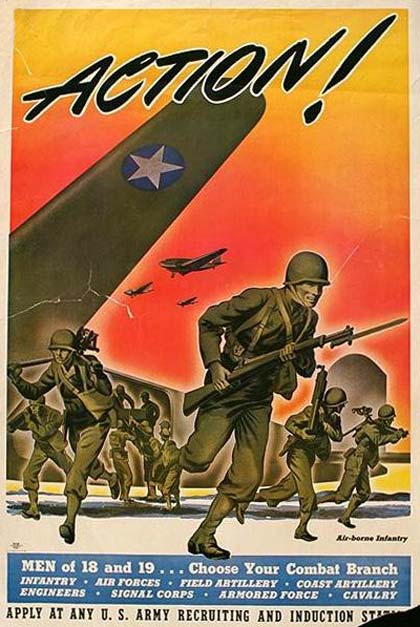
The pay was small but, co-ordinate to pre-induction meetings, it was decent compensation if all the benefits were calculated. Buck privates and apprentice seamen earned a paltry $fifty a month. The highest noncommissioned officers, principal sergeants in the Army and chief lilliputian officers in the Navy, earned $138 a calendar month. Simply Role of War Data officials said people should include room, board, and other benefits in the equation "to bear witness what a private or apprentice seaman actually gets" per twelvemonth: Greenbacks - $600; Food - $576.50; Shelter - $120; Equipment - $170; Health care - $100; Life insurance savings - $63.twoscore; Cigarettes savings - $ten.95; Laundry savings - $32.fifty; Postage and barber savings - $26.65. The optimistic total rose to $1,700 per year.Footnote 16
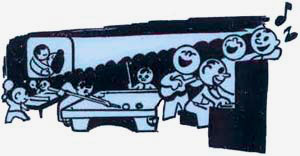
Related Documents
 "Pre-Induction Coming together" Minutes, Marion County Pre-Induction Committee, Jan. 26, 1945. Folder 56, Box 27, Defence force Council Records, OSA.
"Pre-Induction Coming together" Minutes, Marion County Pre-Induction Committee, Jan. 26, 1945. Folder 56, Box 27, Defence force Council Records, OSA.
Notes
- John Due west. Jeffries, World State of war II and the American Dwelling house Forepart: Part One (Washington D.C.: National Park Service, 2004), Pages 19-21; Ronald H. Bailey, The Abode Forepart: U.S.A. (Fourth dimension-Life Books, Inc., 1977), Pages 42-47.
- Ibid.
- Ibid; William K. Tuttle Jr., Globe War II and the American Home Front: Part Two (Washington D.C.: National Park Service, 2004), Folio 57.
- John W. Jeffries, World War II and the American Home Front: Part Ane (Washington D.C.: National Park Service, 2004), Page twenty.
- "Introduction to the Ground forces," U.S. Office of Noncombatant Defense, February. 1944. Page III, Binder 2, Box 35, Defense Council Records, OSA.
- "Oregon Pre-Induction Program" Press Release, State Defence Council, July 17, 1944. Folder x, Box xv, Defense Council Records, OSA.
- Memorandum from Harold Snyder Re: Observations about Pre-Induction Training, June 1, 1944. Folder 56, Box 27, Defense force Quango Records, OSA.
- "Oregon Pre-Induction Program" Printing Release, State Defense Council, July 17, 1944. Folder 10, Box 15, Defense Council Records, OSA; Letter from James Olson to Vivienne Becker, May 2, 1944. Folder 10, Box 15, Defence Council Records, OSA.
- "Pre-Induction Meetings" Chart, State Defense Council, May xxx, 1944. Folder 10, Box 15, Defense Council Records, OSA; "Oregon Pre-Induction Plan" Printing Release, State Defense force Council, July 17, 1944. Folder x, Box 15, Defence force Council Records, OSA.
- "Answers to Important Questions for the Potential Inductee and His Dependents" Booklet, Country Defense Quango, Sept. 1944. Binder 2, Box 35, Defense force Council Records, OSA.
- "Pre-Induction Meeting" Minutes, Marion Canton Pre-Induction Committee, January. 26, 1945. Binder 56, Box 27, Defense force Council Records, OSA.
- "Introduction to the Army: Suggestions for Pre-Consecration Advisory Meetings" Guide, U.Due south. Office of Civilian Defence force, Feb. 1944. Folder 2, Box 35, Defense Quango Records, OSA.
- "Pre-Induction and Draft Aid Center" Briefing Voice communication, Capt. Andrew Agree, State of war Department, May 31, 1944. Page three, Folder 56, Box 27, Defense force Council Records, OSA.
- "Introduction to the Ground forces: Suggestions for Pre-Induction Informational Meetings" Guide, U.S. Role of Civilian Defense, Feb. 1944. Folder 2, Box 35, Defence Council Records, OSA.
- Ibid.
- Ibid.
- Ibid.
Source: https://sos.oregon.gov/archives/exhibits/ww2/Pages/services-induction.aspx
0 Response to "How Were Families Affected by World War 2 Draft"
Postar um comentário